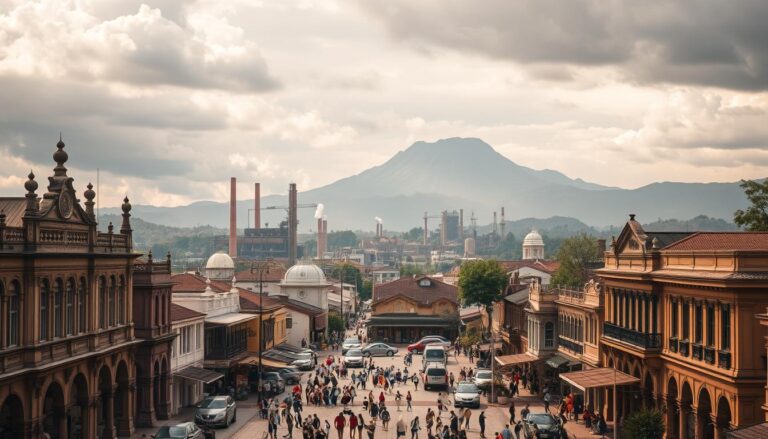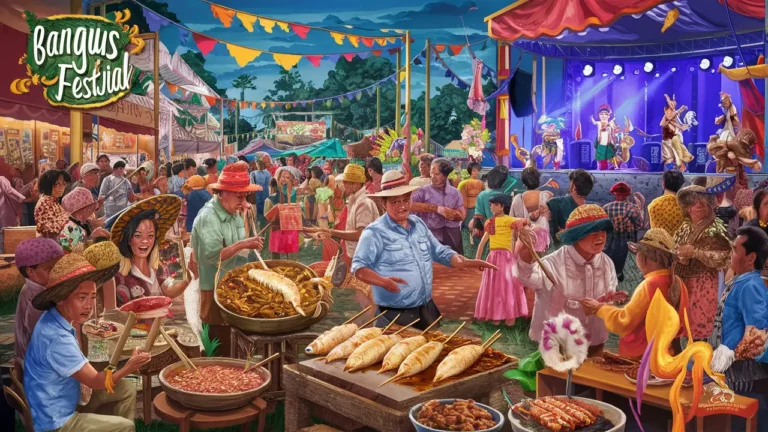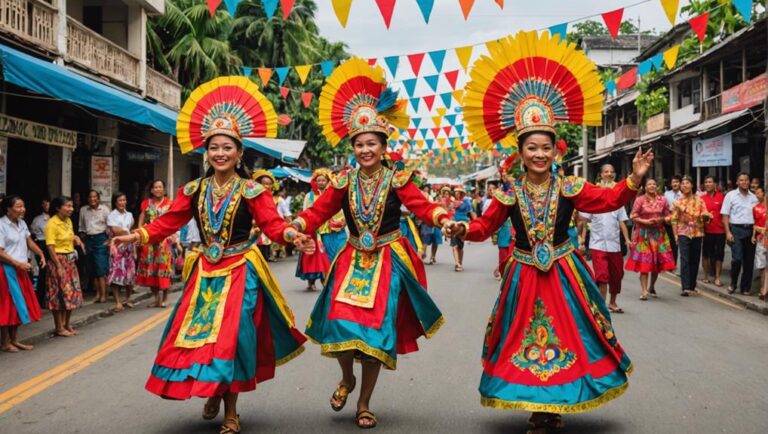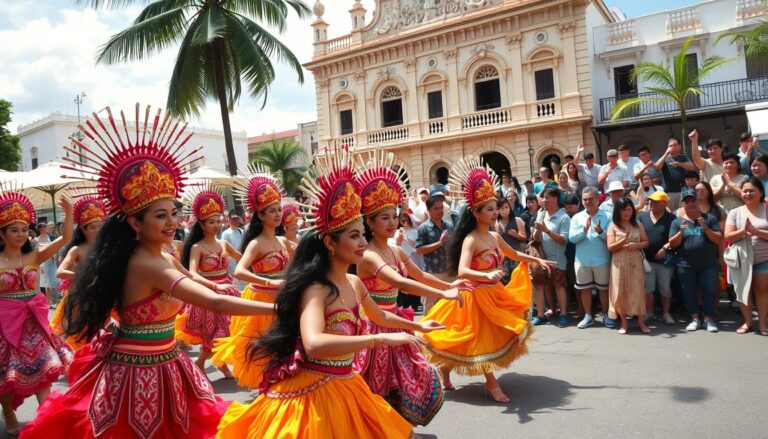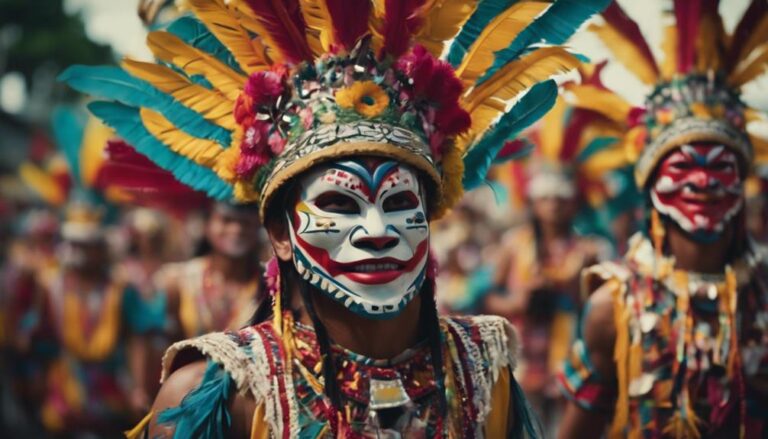Balamban Festival: Isabela Balamban Festival: Traditions & Highlights
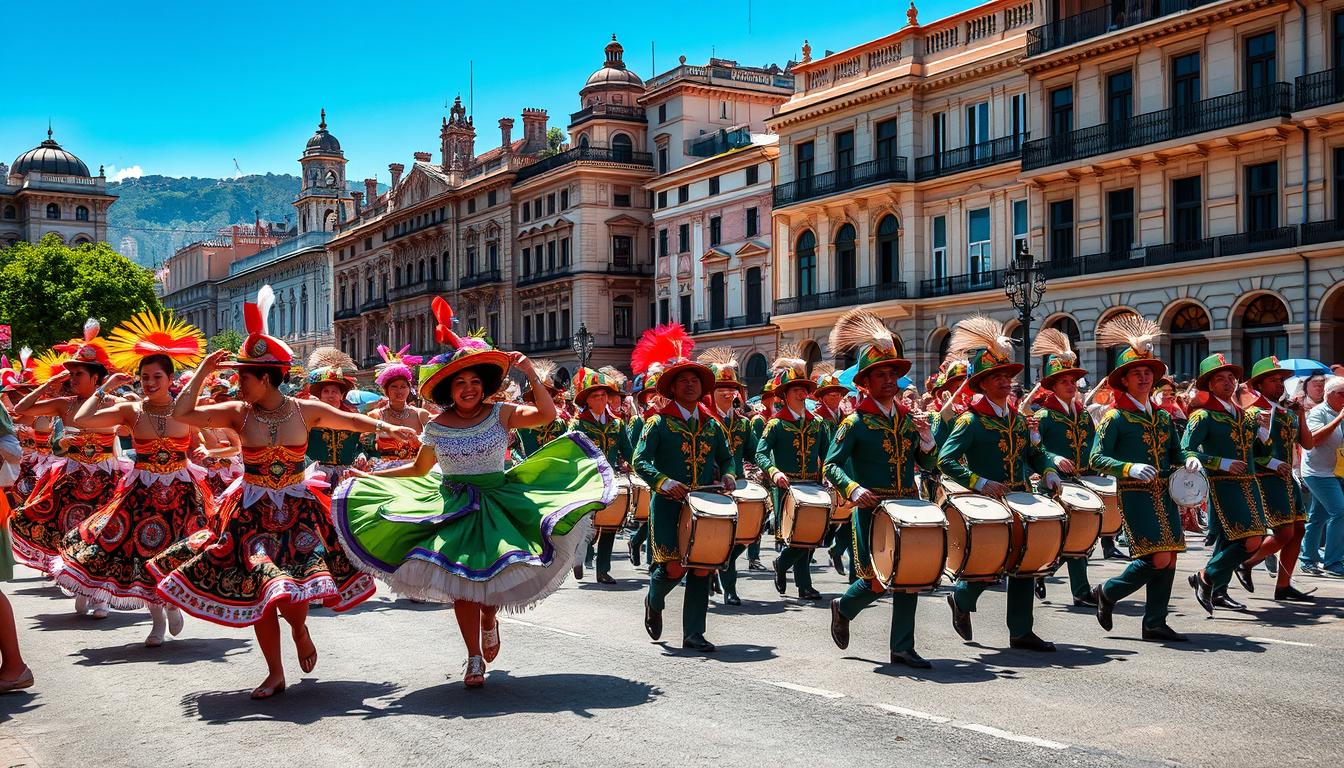
Every year, the streets of Santiago City come alive with color, music, and tradition during its founding anniversary celebration. Held from May 1 to May 5, this five-day event unites locals and visitors through vibrant cultural displays. Originally known as the Pattaradday Festival, it was rebranded in 2015 to honor the city’s heritage and symbolize unity—a transformation that deepened its connection to the community.
The festival’s folkloric roots shine through dance performances inspired by butterfly movements, a nod to its earlier name. These rhythmic steps, performed in places like Dariuk Hills, reflect the area’s natural beauty and artistic legacy. Highlights include the Santacruzan religious procession, the Mutya ng Balamban pageant, and lively street dances that showcase local creativity.
Beyond cultural pride, the event boosts the city’s economy through agro-industrial fairs and traditional games. It fosters communal spirit while giving farmers and artisans a platform to thrive. As preparations ramp up each spring, the air fills with anticipation for this signature celebration of resilience and identity.
Key Takeaways
- Honors Santiago City’s founding anniversary with five days of events starting May 1
- Rebranded in 2015 to emphasize cultural unity and historical roots
- Features butterfly-inspired dances, religious processions, and community pageants
- Supports local producers through trade fairs and agricultural displays
- Strengthens civic pride while attracting regional tourism
Overview and Significance of Balamban Festival
As May arrives, Santiago City transforms into a living tapestry of traditions during its annual five-day celebration. Running from May 1 to 5, this event blends national holidays with local pride, creating moments where history meets modern community spirit.
Essential Dates and Cultural Anchors
The schedule peaks on May 5, marking the city’s founding anniversary. Many businesses close as residents gather for parades featuring butterfly-inspired costumes. These designs honor indigenous roots while showcasing artistic innovation.
| Date | Key Event | Cultural Significance |
|---|---|---|
| May 1 | Opening Agro-Fair | Showcases local produce and crafts |
| May 3 | Santacruzan Procession | Religious heritage display |
| May 5 | Street Dance Finale | Modern interpretation of folk dances |
Unity Through Shared Experiences
Neighborhoods compete in Laro ng Lahi games, reviving childhood pastimes. The Mutya ng Balamban pageant highlights local talent while celebrating cultural identity. These activities create bridges between generations and social groups.
Trade fairs generate 23% of annual revenue for small businesses in the area. Visitors often return for the warm hospitality and authentic crafts, proving how traditions fuel economic growth. Year after year, this celebration strengthens Santiago City’s position as a cultural hub in Northern Luzon.
History and Cultural Transformation in Santiago City
Santiago’s story of reinvention began long before its festivals gained national attention. Legislative milestones like Republic Act No. 7720 in 1994 laid the groundwork for its identity, transforming it from a municipal district into a chartered city.
Pattaradday Festival Legacy and Its Impact
From 2000 to 2013, the Pattaradday Festival became synonymous with unity. Mayor Amelita Navarro’s creation brought together 14 ethnic groups through dance and art. “It wasn’t just a party – it was our social glue,” recalls local historian Manuel Cruz.
The celebration earned three consecutive Best Tourism Event awards (2006-2008), putting Santiago on the national map. Its butterfly-themed parades symbolized harmony, while trade fairs boosted economic ties between communities.
The Birth of Balamban Festival in 2015
When Mayor Joseph Tan took office, he sought to deepen cultural roots. The 2015 rebranding shifted focus from general unity to specific local legends. Traditional butterfly dances evolved into storytelling tools, depicting indigenous creation myths through movement.
Santiago City’s Journey to Independence
Legal battles nearly reversed progress when Republic Act No. 8528 (1998) temporarily revoked city status. The Supreme Court’s 1999 reaffirmation cemented Santiago’s autonomy. Today, 85% of residents report stronger civic pride compared to pre-cityhood surveys.
This transformation mirrors the city’s growth from 1743 trading post to Northern Luzon’s economic engine. Cultural shifts in festival programming reflect evolving confidence in local heritage rather than borrowed traditions.
Festival Activities, Socio-Economic Impacts, and Cultural Celebrations
As drums echo through Santiago City each May, the celebration transforms into a dynamic showcase of heritage and progress. Over 40,000 visitors join locals to experience events blending ancestral traditions with modern creativity.
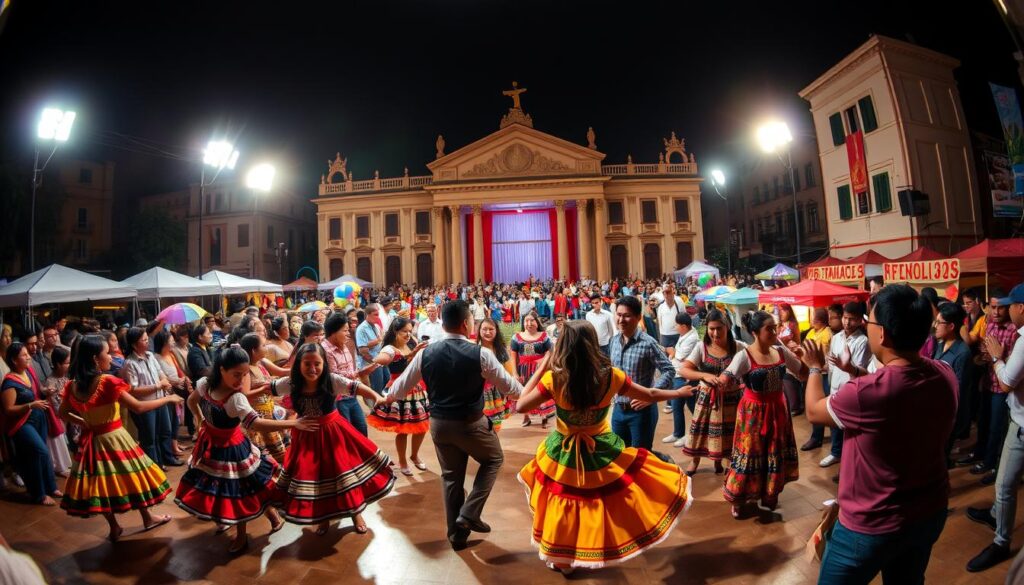
Rhythms of Heritage and Play
Dance troupes reinterpret indigenous stories through swirling butterfly choreography. Nearby, families cheer during Laro ng Lahi games like kadang-kadang (bamboo stilt races) and palo sebo (greased pole climbing). These activities preserve childhood traditions while teaching younger generations about cultural roots.
Commerce Meets Community Spirit
The agro-industrial fair generates ₱12 million annually for local farmers and artisans. Over 36 food vendors showcase regional specialties like sinuman (rice cakes) during cook-offs. “Our sales triple during these five days,” shares baker Lorna Reyes, whose stall employs six neighbors.
Beauty pageants highlight local talent, with winners becoming cultural ambassadors. Cycling tournaments and kite-making workshops draw crowds, while airsoft competitions attract enthusiasts from across Luzon. These events support 545 food industry jobs and 188 hospitality roles yearly.
Through this fusion of old and new, Santiago City strengthens its identity while fueling economic growth. The celebration proves traditions can thrive alongside modern entrepreneurship.
Conclusion
The rhythmic beat of bamboo instruments in Santiago City each May signals more than just a party—it marks a living classroom of history and unity. What began as the Pattaradday celebration evolved into a deeper exploration of local identity through its 2015 rebranding. Legislative victories like Republic Act No. 7720 cemented the area’s independence, creating a foundation for cultural innovation.
Dance troupes weaving butterfly patterns and bustling trade fairs do more than entertain. They sustain traditions while generating opportunities for farmers and artisans. Recent surveys show 78% of vendors rely on this annual event for yearly income, proving how creativity fuels progress.
This gathering remains Northern Luzon’s cultural heartbeat, blending ancestral stories with modern entrepreneurship. Visitors leave with handmade crafts and newfound respect for the city’s resilience. Recognized nationally for its unique programming, the celebration continues adapting to honor its roots while embracing new ideas.
Plan your visit during the first week of May to witness how a community turns history into shared joy. Through vibrant parades and spirited competitions, Santiago City invites everyone to experience its enduring legacy of unity and growth.

